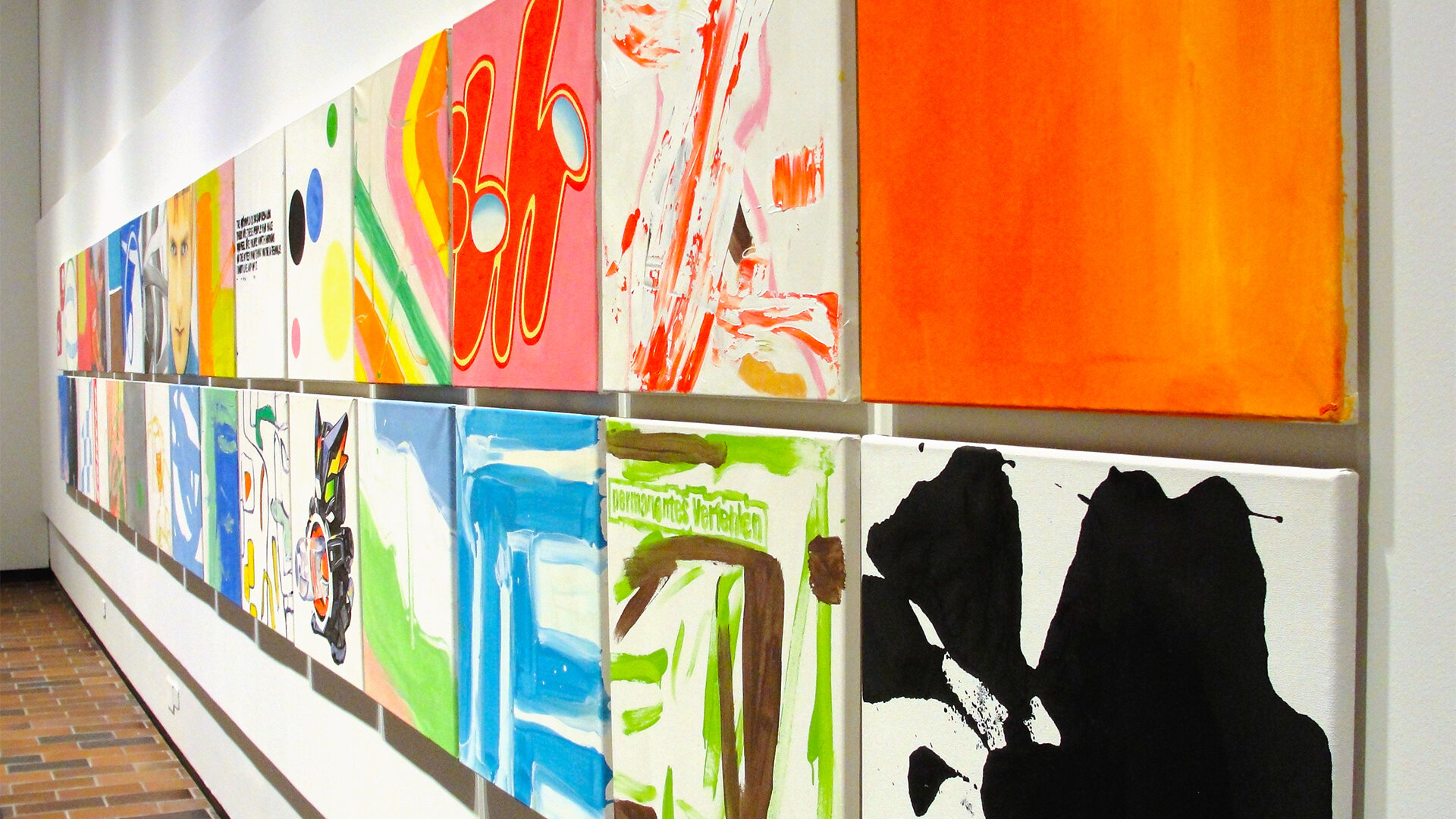Remembering Internet Pioneer Michel Majerus

The late artist masterfully metabolized the flattened time and culture of an infinite internet age during his short life.
Cover photo: Untitled (Studiowall), 1996-2002, acrylic on canvas, oil, and silk screen print on canvas, by Michel Majerus, Louisiana Museum of Modern Art, Humlebæk, Denmark (2019).
“A brief encounter is the most beautiful encounter that exists.”
Described as a “pioneer of the new post-analog painting”, Michel Majerus was born on this day in 1967, in the city of Esch-sur-Alzette in Luxembourg. He would have been 54 years old.
Majerus expressed the flattened time and culture of an infinite internet age. The internet he was familiar with involved dial-up connections and dedicated cafes. Nevertheless, Majerus metabolized this invention faster than any artist.
“Majerus was interested in everything new, and I do feel that his own personal sense of time and omnipresence was very much in line with how we think of the World Wide Web, in terms of everything happening now,” explained friend and art critic Daniel Birnbaum in 2014.
Majerus studied under American conceptual artist Joseph Kosuth at the State Academy of Fine Arts in Stuttgart, Germany, in the early 1990s. He moved to Berlin in 1992. Tragically, in 2002, during the rise of his stardom, his life was cut short in a plane crash at the age of 35.
He produced an extensive collection during his ten years of production, totaling over 1,500 works. As observes artist Oliver Osborne for Mousse Magazine, “He didn’t live to see the full force of the Internet unleashed, but he casts a long shadow for those artists who have.”
Majerus freely combined a variety of techniques, subjects, and themes. He found inspiration in everything, from art history to video games. Kunstmuseum Stuttgart director Dr. Ulrike Groos compares him to a DJ in the way he “samples these different aspects into one work.”
“You can no longer make art that is just art,” Majerus once declared, revealing his interest in iconoclasm. Frieze writer Dominic Eichler summarizes Majerus’ style as “a hedonistic mélange of old-school American Abstract Expressionism and Pop art in a contemporary digital blender; frank, energetic and untroubled.”
Majerus utilized Photoshop — invented in 1987 and licensed to Adobe in 1988 — to design his compositions. “The software allowed him to weave his source materials to a greater degree than that seen in the work of earlier artists who embraced a similar collage aesthetic,” writes Roxana Marcoci in the 2007 book Comic Abstraction.
Japanese Superflat pioneer and fellow post-analog artist Takashi Murakami explains, “it was a major turning point for my work when Apple computers came about because I was able to make patchworks or collages of images very easily.” He later adds, “if it weren’t for computers, I think I would never have been this successful as an artist.”
In cooperation with Majerus’ estate, in 2020, Murakami created a new collection of work in homage to the late artist. Murakami takes particular interest in Majerus’ expressions of “cultural clash” inspired by modern globalization.
Unwittingly describing the fleeting nature of his own short life, Majerus posited in a 1997 lecture, “it is impossible to suppress the memory of an image. That is particularly the case with past or ephemeral things. There is always only one thing. A brief encounter is the most beautiful encounter that exists.”










